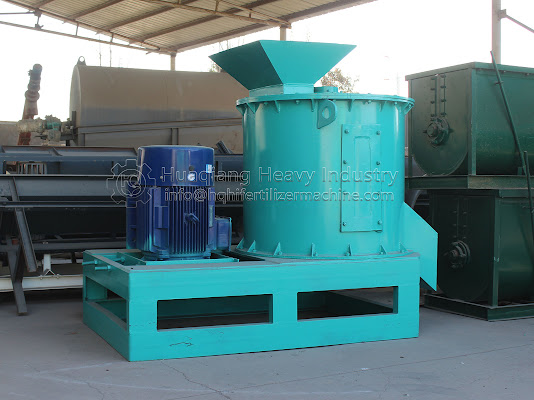Introduce granulation method of biological compound fertilizer production line
The granulation process is the key process of the biological NPK fertilizer production line. Its granulation quality is a key indicator of the quality of the compound fertilizer. The granulation methods of the biological compound fertilizer production line mainly include the agglomeration method and the extrusion method. Divided into disk granulation and cylindrical granulation, according to the position of the pressure roller (and die hole), the extrusion method is divided into roll granulation, flat die granulation and ring die granulation. These granulation methods have their own advantages and disadvantages. The disc granulation is intuitive and simple, the granulation rate is high (> 90%), the granules are automatically classified, the size is uniform, the unit power consumption is low, and the return is less. The requirements for mixing uniformity and fineness are high, and there is a small amount of dust spilling out. The granulation rate of cylinder granulation is low (40% -60%). Automatic classification, but high productivity, no dust spillover, low requirements for material mixing uniformity, consistent grain shape but not smooth, low productivity, high unit power consumption, severe mold wear, and can kill some live bacteria when the temperature rises, Comprehensive analysis, the disc granulator (ie granulation method) is more suitable for biological compound fertilizer granulation.

The main working part of the disc type fertilizer granulator machine of the NPK fertilizer production line is an inclined disc that can adjust the angle and rotation speed. When the disc rotates, it uses the friction generated by the bottom and inner walls of the disc to move the animal in the circumferential direction. At the same time, force transmission occurs between the particles, which generate friction between the particles, which causes the particles to squeeze and rub each other. Due to the difference in the quality of the particles, different gravity and centrifugal forces are generated, and the particles are automatically classified, and large particles float. On the surface of the rolling oblique layer, the small particles fall under the rolling oblique layer and form their own motion trajectories according to the difference in particle size. When the biological agent sprays and wets the surface of the core particles, the core particles will accumulate more and finer particles. As the particles gradually grow and the mass increases, when the centrifugal force generated by them is increased enough to overcome the friction between the particles, they will be thrown out of the disk and become the required particles.
The above is the granulation method of the biological compound fertilizer manufacturing process introduced in detail for everyone. Our company specializes in the production of compound fertilizer equipment manufacturers. The main products are disc granulators, extrusion granulators, roll extrusion granulators, and rotary cooling machine, single-cylinder dryer, rotary coating machine and other devices.

The main working part of the disc type fertilizer granulator machine of the NPK fertilizer production line is an inclined disc that can adjust the angle and rotation speed. When the disc rotates, it uses the friction generated by the bottom and inner walls of the disc to move the animal in the circumferential direction. At the same time, force transmission occurs between the particles, which generate friction between the particles, which causes the particles to squeeze and rub each other. Due to the difference in the quality of the particles, different gravity and centrifugal forces are generated, and the particles are automatically classified, and large particles float. On the surface of the rolling oblique layer, the small particles fall under the rolling oblique layer and form their own motion trajectories according to the difference in particle size. When the biological agent sprays and wets the surface of the core particles, the core particles will accumulate more and finer particles. As the particles gradually grow and the mass increases, when the centrifugal force generated by them is increased enough to overcome the friction between the particles, they will be thrown out of the disk and become the required particles.
The above is the granulation method of the biological compound fertilizer manufacturing process introduced in detail for everyone. Our company specializes in the production of compound fertilizer equipment manufacturers. The main products are disc granulators, extrusion granulators, roll extrusion granulators, and rotary cooling machine, single-cylinder dryer, rotary coating machine and other devices.



Comments
Post a Comment